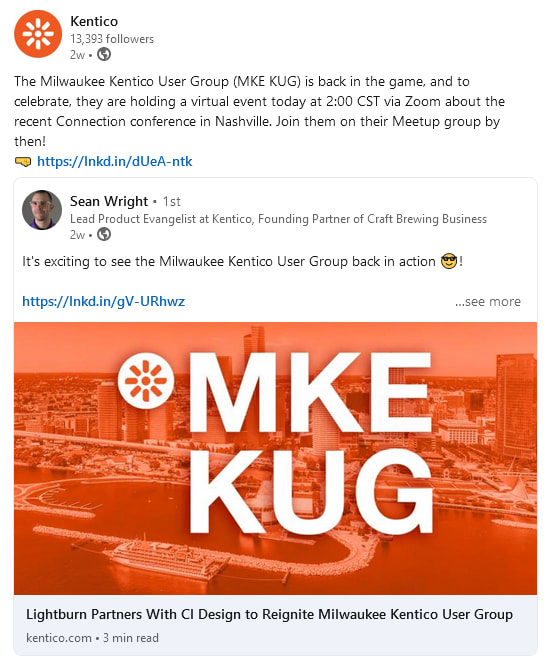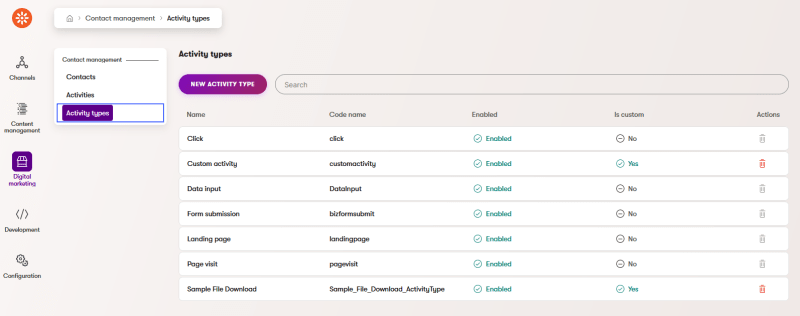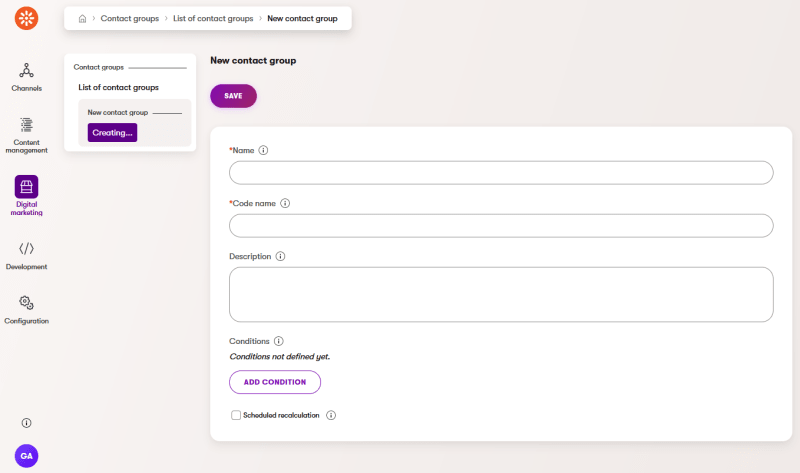We all know that personal data is crucial for true customer nurturing. When we harness actionable insights from our customers, we do so with the intent to strengthen our relationship with them by delivering truly relevant and unique experiences. But how can you encourage visitors to share actionable data in the first place?
Like the parents who have to persuade their children to eat their greens: "Three more peas, then you can jump straight to dessert," we have to encourage our customers to give up some of their personal website visitor data in order for us to make magic for them. And just as the parent who spends hours at the table making airplane noises, we ask…
Why is website data collection so difficult?
80% of customers are more likely to purchase from a brand that personalizes the buying experience. So if 36% of consumers believe brands should be offering more personalization, why are there so many hurdles to collecting the kind of personal details that are crucial for delivering it?
It should be a clear win-win situation for both the visitor and your sales and marketing teams. They provide the sales and marketing data and then your sales team can create outreach that makes sense.
For us: data-driven personalization has the power to halve acquisition costs, boost revenue, and increase marketing spend efficiency, as well as boost brand loyalty — all the favorite things of most B2B companies.
For the customer: it helps us deliver a hand-picked experience that reinforces their sense of self and centrality on this planet, so they don't mind the website analytics tools gathering their info for marketing efforts.
So let's banish the hurdles to getting customers to volunteer their personal data and start doing some of the things that will encourage them, so we can deliver those unparalleled digital experiences they dream of.
8 ways to encourage people visiting your website to share data
1. Turn up the transparency
You must ensure your customers understand why you are asking for their data and how you plan to use it. So explain your terms of website data usage and their related rights in plain, uncomplicated language so they can better understand how website visitor tracking data and collection works.
And then be sure to highlight the benefits of sharing their information with you; what improvements they can expect through being remembered and having their experience tailored to their interests and preferences.
Make your proposition clear: You eat three peas and we take you straight to dessert, but in terms of web visitor tracking.
Then, once they've entrusted you with their data, use it swiftly and effectively to prove that data sharing - improved experiences. Get them on board and make sure your sales and marketing teams provide value to these visitors in the future.
For example, if they're opting for a seven-day free trial, show them which data your website tracking tools will be collecting and what you're going to do with it.
2. Tackle trust head on
With great data comes great responsibility. Marketing in today's world is a game of balancing data with trust and the way you leverage your user behavior data makes all the difference.
The Independent has reported that card and account fraud jumped 40% in a year, with £2 billion being stolen from 1 in 10 British adults. And Juniper Research states that phone and online credit card fraud reaches $19.3 billion.
So when The Identity Theft Resource Center (ITRC) the number of consumer identity theft complaints rose 3.3%, to just over 1.43 million, we shouldn't be too surprised at our customer's hesitation to divulge their information willingly or unwillingly with the best website visitor tracking tool.
You need to reassure your customers that their data is safe with you and that you recognize its value. Not just that you won't share it with third parties, but that you are worthy of trust as a brand. Being GDPR compliant and letting your customers know how seriously you implement it is just one of the ways to instill trust and show users that you'll use the data in a good way.
If you're using website visitor tracking software, make sure that people know about these visitor tracking tools as soon as they open your homepage. It will not hurt the user experience, and they will know exactly what they can expect to happen with their data and how you will use it for marketing and sales.
3. Incentivize sharing
Any incentive you offer in exchange for data must be something that your customer would consider to be of actual value. Simply receiving your newsletter doesn't count. What about a checklist? Access to how-to videos? An extended warranty? Free shipping? Limited offers? Reward points? If someone visits your website and you're asking for their contact information, make sure it's worth their time.
Prove that you care about their interests and offer them personalized coupons, vouchers, or discounts tailored to their interests, location, job titles, and buying history. 52% of Americans said they would share their purchase history in exchange for promotional discounts.
Show how well you've listened to them with predictive recommendations derived from browsing and search history. Based on the data you have, you can create groups with different types of website visitor, and serve them content that interests them before your sales teams even reach out.
Most consumers are more likely to shop with brands that provide relevant offers, recommendations and valuable insights, and many will rather go to Amazon if the brand they’re shopping with doesn’t provide relevant product suggestions.
Make-up subscription company Ipsy receives five million product reviews every month thanks to a system where customers who leave a review receive reward points that they can redeem on exclusive products. With that number of reviews per month, they have valuable data for their marketing strategies.
Bear in mind that bare-bones tools such as Google Analytics will not cut it if you want to provide superior experiences to your customers. Proper behavior tracking features such as the ones ready-to-use in digital experience platforms from Kentico can help you get a better view of the profile of the people visiting your website.
4. Gamify data collection
No one likes forms, so why not create a game that rewards customers for the information they provide?
Not only is a game likely to boost awareness of your brand and attract new registrants to your website, but it's also likely to encourage existing customers to share more details. The more they provide, the higher their score. Then you can offer exclusive benefits and discounts according to points earned during these gamified interactions (aka data-gathering sessions).
Users of the Heineken app were asked predictive questions during the Champions League game like "Will they score within 20 seconds?" and trivia questions during downtime. Points were awarded for correct answers.
5. Get embedded in social
Did you know that 1.56 billion people log onto Facebook every single day? By inviting your customers to log into your website using their Facebook (or Google) account, you make yourself just as accessible. Convenience like that is a clear benefit and a direct reward to your busy customer for sharing their data.

Social marketing is still going strong, and it's one place where your customer has no qualms about sharing every detail of their lives—even coffee cup before and after shots make the cut. And in fact, 59% of Americans believe social media has made getting answers from brands easier. That adds up to good customer service, too.
So you should incorporate social throughout your buying process and customer support—ensuring you have the right tools to analyze your audience on each channel. Then it’s a case of the more engaged a customer is; the more data falls in your lap.
6. Be your brand
You know when you meet a new person, and you're a bit wary—only revealing basic information about yourself? But then you find out she went to your school/also loves raccoons/watches the same TV shows/bakes biscuits for her dog. Suddenly the barriers come crashing down, and she is upgraded from stranger to friend.
It's the same with your customer.
Customers tend to align themselves with brands whose values reflect their own, and 30% of customers who feel high levels of trust and loyalty are willing to share their personal data with trusted brands.
So don't be afraid to promote what you are. Share your values and mission statement. Exude your company culture. Infuse your marketing messages with your ethics. Go niche. This builds confidence in your audience and builds trust in your brand—this kind of trust can lead to deep-seated loyalty.
Research shows that consumers with an emotional connection to a brand have a 306% higher lifetime value, stay with a brand longer, and are much more likely to recommend brands.
Supermarket chain Whole Foods lives and works by a specific set of principles that speaks directly to its audience. By having its values woven into the fabric of the company, it sets up a cycle of empowerment between itself and its customers who are inspired and passionate about the same things. Whole Foods currently has more than 300 stores in the US and registers annual sales of $11 billion.
7. Take on technology
To deliver those magical customer experiences and deliver on your data-exchange promise, you must be able to collect and manage your data-driven customer insights from all touch points at all times, and then act on them.
So your technology must enable data capturing across all channels and then must store it all in one place under one customer profile. It's got to facilitate automated data analysis and provide strong content personalization, marketing automation, social integration, and A/B testing features.
You need a digital experience platform (DXP) that will support you in orchestrating a symphony of channel messages and preferences that layer along each touch point, delivering that ever-more-relevant yet seamless experience.
With Kentico's website visitor tracking tools, you can collect data without being intrusive and breaking trust with your potential customers. For example, you can segment the visitors on your website and then determine who the best sales leads are.

The right visitor tracking software will make it easier to collect data and communicate with your customers, as well as sales and marketing in general.
8. Use Kentico to collect data effortlessly
You can ask customers to provide data or simply collect the data yourself—without intruding on your visitors' privacy. You can use website visitor tracking in Kentico to capture insights such as:
- which landing pages they visit
- how many pages they visit
- which products they viewed while visiting your site
- which forms they submitted (e.g. demo form, live chat)
- which channels they came from
- and many other visitor tracking data points to help your sales efforts

Kentico is one of the best website visitor tracking software not just because of the demographic data points and features like the ones mentioned above. Based on the content from our visitor tracking tool, you can do the following:
- show them more personalized content based on the website visitor identification
- segment the visitors based on the way they interact with your site
- send the website visitors personalized content via email based on their user behavior

If you're afraid of using website visitor tracking software or web analytics tools in general, Kentico is a great way to get started - as you have much to gain but nothing to lose. Your marketing campaigns will be more personalized and your customers will engage with you more willingly, making it easier for the sales team too.
Use website visitor tracking software today - without concern
If your brand can be personal, fun, helpful, convenient, generous, creative, social, trustworthy, and transparent, and you can underpin it all with the technology to match, you'll soon be on your way to building those impactful, meaningful, and nurturing customer relationships that last a lifetime, and customers are lining up to share data with.
There are different types of website visitors, but are you ready to provide value to those browsing your pages now? Get started with Kentico's DXP today and collect valuable insights, all the while delighting your website visitors.

